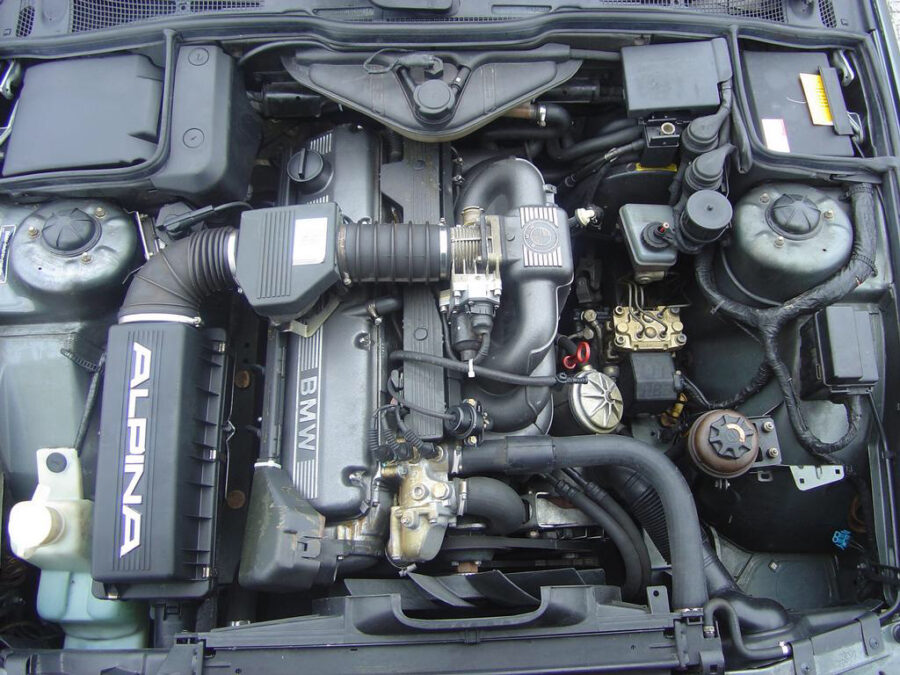The entire line of M30 engines from BMW was recognized as a successful engineering solution of German designers of the XX century. This is evidenced by prestigious awards, love and recognition of car owners, as well as the working condition of the engines, which have been produced since 1968. Today, these internal combustion engines are considered obsolete. But this does not prevent owners of old BMWs from continuing to operate the car.
All engines with index M30 were produced from 1968 to 1992. They had a cast iron cylinder head. The engine type was in-line. The fuel mixture was supplied to the engine by injector or carburetor. Power units had six cylinders. There were 2 valves per cylinder. Total 12 pieces. From the German factory, the engine comes out with a recommendation of gasoline with an octane number of 92. The average, for all engines, the value of the total volume of oil in the motor is equal to about 6 liters.
The normal operating temperature of the internal combustion engine should not exceed 90 degrees. As for the resource of these power units, the mileage value goes far beyond 500 + thousand kilometers.
The protagonist of our review is the M30B35M engine. This power unit boasts the most impressive displacement in the M30 engine lineup. The exact displacement is 3.43 liters. In order to reach the maximum 221 horsepower, the engine must be accelerated to 4 thousand rpm. At the same rpm value, the engine has a maximum torque of 305 Newton meters.
This power unit was installed on models from BMW 635, 735, 535. It was produced from 1988 to 1993. This engine is rich in various modifications and serious potential in terms of tuning. The power plant with the index LE developed a power of 220 horsepower. And the torque was 70 Newton meters more than the protagonist of our review. The engine was also produced with a supercharger, which gave a useful power of 252 horsepower. German engineers also took care of the engine’s performance and seriously moved the maximum torque value from 4000 rpm to 2200. Thanks to this, the engine picks up speed perfectly from the bottom.
M30B35M engine specifications
| Power, hp. | 185 – 218 |
| Fuel type | Gasoline |
| Volume, cm*3 | 3430 |
| Maximum torque, N*m (kg*m) at rpm. | 290 (30) / 4000; 310 (32) / 4000 |
| Fuel consumption, l/100 km | 11.2 – 14.8 |
| Engine type | In-line, 6-cylinder |
| Cylinder diameter, mm | 92 |
| Number of valves per cylinder | 2 |
| Maximum power, hp (kW) at rpm. | 185 (136) / 5400; 218 (160) / 5500 |
| Blower | No |
| Compression ratio | 8 – 10 |
| Piston stroke, mm | 86 |
Disadvantages
This powertrain has similar problems that are common to all m-30s. Despite the lack of serious engineering flaws that were present on the initial 2.5L and 2.8L engines, our hero is also prone to overheating. It is necessary to keep an eye on the engine’s operating temperature. Pay your attention to the condition of the engine cooling system. Otherwise, the main cylinder block will lead, which is guaranteed to cost the owner of the engine in a round sum of money. It is necessary to either rebuild the engine, or, if overhaul is impossible, then buy a contract engine. We recommend replacing the radiator, pump and thermostat when buying a car with this engine. Check for leaks in the cooling system after replacing the antifreeze.

This engine also has cracks in the cylinder block near the bolt threads. This is the main disease of the 30 range. The protagonist of our review also has this serious defect. As a rule, specialists do not undertake to repair this problem. The cylinder block is replaced, or a contract engine is purchased.
The final argument is that the life of these engines as of 2018 is trivially exhausted. Therefore, the internal combustion engine will have problems that are related to the limited life of the parts. For example, the timing mechanism, valve wear and crankshaft wear.
Chip Tuning
Power unit m30b35 has an incredible potential in tuning. Garage craftsmen, and specialists at the service station bored the cylinder block, installed stronger pistons and connecting rods. Thanks to these modifications, the engine received an increase in power, about 100-120 horsepower. And the useful volume of the engine turned from 3.5 to 4 liters. It is unambiguous that the cost of a powerful upgrade will be high. But the fact that the engine produced in the 70s of the last century can have about 400 horsepower, while the resource is practically not reduced – strikes the imagination. These are unprecedented numbers for a civilian car.
So, let’s get started. We said 400 horsepower. But what do you have to do to get it? In order to squeeze the maximum out of this engine, skillful people also put a Turbo kit, with a power of about 1 bar. And the owner has a choice. To give almost half the cost of the car for a supercharger or to use the Chinese version of the branded Gerhardt.
Next was installing an improved camshaft, exhaust system, with a straight-through exhaust. The whole thing is polished with tailoring. And the result is an engine with 380 to 400 horsepower. But be careful. Chinese turbines have a rather short service life – about 2-3 thousand kilometers. Although, as someone is lucky.



0 Comments